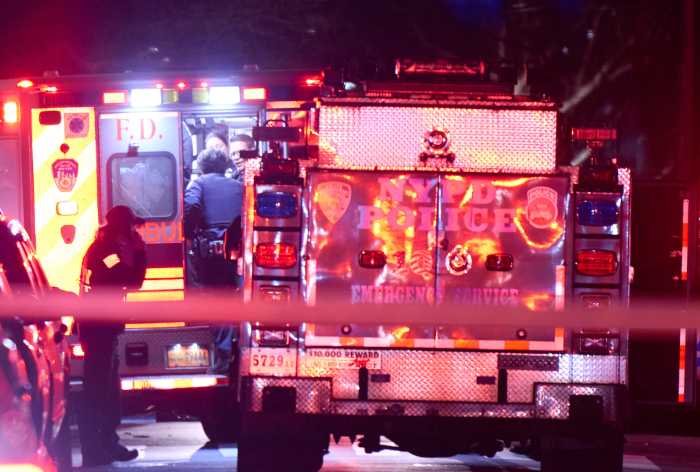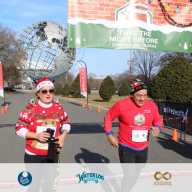For decades, the Halletts Point section of Long Island City has been isolated from the rest of New York City, until NYC Ferry built a landing on the southern edge of the Astoria Houses.
“The waterfront was always a transit desert so a transportation option was sorely needed,” Old Astoria Neighborhood Association President Richard Khuzami said. “What we didn’t anticipate was how the ferry opened the neighborhood to the rest of New York City and our cultural institutions like the Noguchi Museum, Socrates Sculpture Park and the Welling Court Mural Project have all been positively affected.”
In fact, since its launch in Astoria in 2017, the annual attendance at these cultural institutions has doubled, according to Tom Grech, the president and CEO of the Queens Chamber of Commerce. And that has Khuzami pushing to a second arts district in Astoria after the Kaufman Arts District became the first in the borough in 2014.
The Astoria Waterfront Arts District would stretch from Astoria Boulevard south to include Rainey Park housing hundreds of graffiti artists, abstract painters, sculptors, muralists and many more who contribute to the landscape of the community. The Halletts Cove ferry landing would provide access to the Astoria Waterfront Arts District to visitors from all five boroughs.
“The arts district would not be a valid concept without the ferry,” Khuzami said. “Once the service started it opened up this whole area to wonderful new possibilities.”
Now he wants a connection to the Upper East Side which sits invitingly just 1,515 feet across the East River cutting transit time from more than one hour by subway to an easy five minute commute. Khuzami was told by the city’s Economic Development Corporation, which oversees NYC Ferry, that the extension could not occur until after 2021 after the service is extended to other parts of the city.
“It’s a very simple process because the infrastructure is already in place,” Khuzami said. “We would like to see this expedited. OANA works hard to improve the quality of life in the area and help it grow economically and we want to welcome the rest of New York City to our shores. Like the saying goes, if you build it they will come.”
The OANA started an online petition asking for the ferry extension to the Upper East Side.
To sign the petition, go to www.oana-ny.org, scroll down to “Supporting the extension of the NYC Ferry”, and click on “SIGN THE PETITION” button.
The NYCEDC did add the new Brooklyn Navy Yard ferry stop to the Astoria line, NYC Ferry’s first landing at a dedicated job center. The route will connect residents, workers and students to the Navy Yard, which is one of the city’s premier manufacturing and innovation hubs which currently employs 9,000 people.
“The addition of NYC Ferry comes at an ideal moment as we near completion of our largest expansion since WWII and reach 20,000 jobs in the next few years,” Brooklyn Navy Yard President and CEO David Ehrenberg said.
Khuzami and his organization are pleased with the added connection, while thinking of more.
“As NYCEDC continues to expand the service, they’ll be looking at the Marine Air Terminal at LaGuardia Airport and City Councilman Paul Vallone is trying to get the service extended to the World’s Fair Marina in Flushing and maybe even Bayside,” Khuzami said. “Halletts Point would make a great transfer station.”
Vallone held a hearing before his Economic Development Committee in May in which he called for the ferry service at the World’s Fair Marina, which is being reconstructed to upgrade the deteriorated fixed piers, floating docks, and related components damaged by Superstorm Sandy.
“As we continuously look for ways to meet the extraordinary demand for public transit, our city should look to ride the wave of ferry service, which brings a viable transportation option to areas of our city like Northeast Queens that are difficult to access and lack subway access and reliable bus service,” Vallone said.
Transportation advocate and historian Larry Penner, who worked for the Federal Transit Administration for more than three decades, warns that ferry service will become more and more necessary in Flushing, which is explosive growth.
“The Flushing 7 line is running at 100 percent capacity in both am and pm hours, there are already 66,000 daily riders who board at Main Street Flushing and more are on the way with the construction of thousands of new housing units within a ten block walking radius of the Main Street subway station,” Penner said. “Communities all along the 7 line route especially Queens Plaza, Hunters Point and Court Square will be adding thousands more riders in the years to come. Riding a ferry can be less stressful than being packed in a subway car like sardines in a can or stuck on a bus running late in traffic that’s not moving.”




































